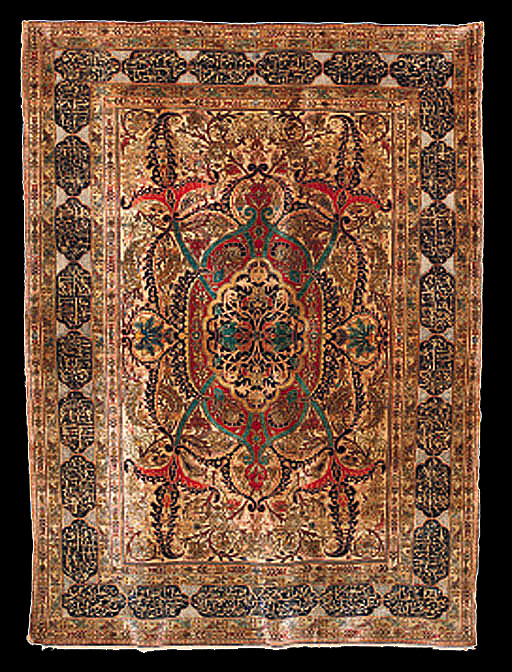|
A SILK AND METAL-THREAD HERIZ RUG
NORTH WEST PERSIA, SIGNED HUMI, DATED
AH 1315/1897 AD
Price Realized $84,018
Sale Information
Christies SALE 6283 —
CARPETS
13 April 2000
London, King Street
LOT NOTES
Lot Description
A SILK AND METAL-THREAD HERIZ RUG
NORTH WEST PERSIA, SIGNED HUMI, DATED AH 1315/1897 AD
The ivory field
with angular arabesques issuing floral and leafy vine around a central
brick-red lozenge medallion containing an indigo lobed centrepiece with
angular vine and mythical animal-heads issuing bold serrated leaves into
the field, in a silver metal-thread border of linked indigo inscription
cartouches between shaded ivory angular floral meander, mill-pattern and
alternating v-pattern stripes, ivory kilim weave at each end, excellent
condition, signed and dated in the metal-thread border
6ft.2in. x
4ft.7in. (188cm. x 140cm.)
Lot Notes
The inscription cartouches
contain a ghazal of Hafiz.
This rug was purchased a considerable
time ago by the father-in-law of the present owner. The family story is
that it was bought from a member of the previous Persian royal family,
although no details are known. The rug does however bear very strong
similarities to a rug in a collection in New York. Both have the same very
dense treatment of the motifs, in inscription cartouche border together
with very thick pile and the very unusual feature of a metal-thread
selvage. The New York rug is said by tradition to have been woven for
Muzaffar al-Din Shah (1896-1907). The combination of the similarity in
technical features, the story about the purchase of this rug, and the date
on this piece (of which the family were not aware), indicate that this
tradition is probably true.
 |

